Choosing the right podcast microphone is the single most important decision you’ll make before starting a new podcast. Besides the content of your episodes, that is.
Great content and relevant special guests won’t compensate for subpar audio quality. As sound is the only medium you’ll use to share with your audience, the audio quality needs to be pristine.
This is why I decided to focus this article on the importance of a great podcasting microphone. The podcasting industry is booming and more players are entering the game. You’ll need to make sure you’re delivering high-quality audio content before publishing your episodes online.
I’ll analyze what makes a good podcast microphone, how sounds get recorded, and what features your microphone should have. This is also a good article for those of you willing to upgrade their equipment. I’ll recommend a few mics that deliver radio-like, professional results.
What makes podcasts so popular these days is that they can be the perfect companions on our daily commutes. They can be easily streamed and downloaded, and audio platforms are constantly expanding to offer a variety of content. The result is a dynamic environment where even amateurs with limited budgets can achieve incredible results by creating a community in a niche that hasn’t been explored before.
In this article, you’ll find what I believe are the best 10 of the best podcasting microphones in the market. I chose these mics for their quality as well as their price/quality ratio. You’ll see the selection features a diverse range of microphones, but I can assure you they all provide professional results.
Before getting to the list of best podcasting microphones, I’ll dive deep into the art of sound recording, how microphones are made, and how to choose the best podcast microphone based on your needs. These are crucial steps to get an understanding of what makes a good podcast microphone the best choice for you. This knowledge will help when you need to take your recording equipment and your show to the next level.
Let’s dive in!
The sound of your voice defines your radio show. Great hosts, a catchy intro or outro, and good promotion are just the icing on the cake. Your voice will always be on the show. People will come to associate your voice with the content you share and discuss.
Since the voice will lay the foundation of your podcast, you must ensure it’s recorded in the best possible way. The best voice recording quality is not achieved by simply buying the most expensive microphone or the one with the most positive reviews online. However, choosing a mic that podcasters of all kinds have been satisfied with is a good starting point.
I know it’s tempting to start with an affordable microphone and upgrade to a better one as your audience grows. But will your audience grow if the audio quality is low? The answer is, most likely, no. Therefore, the best choice is to start right away with a podcast mic that showcases voices clearly and transparently.
Relying on excellent content without taking into account your audience’s need for high-quality audio is an act of ego that won’t do any good to your podcast. Today, audio quality is not an option but a necessary characteristic of your show if you want it to thrive.
There are a few things to consider when buying a new microphone for podcasters, the first obviously being the budget.
Microphone prices can range from twenty to thousands of dollars. When I recorded the latest album with my band, my drum kit was surrounded by a dozen microphones. One of the mics was worth $15K, which is basically the cost of my drum kit, cymbals, and one of my kidneys combined.
In the next section of the article, I’ll analyze in detail why some microphones are so expensive. For now, it will suffice to say that some high-end microphones capture sounds and frequencies other microphones would miss or distort. Obviously, music recording is way more complicated than recording your own voice overs. Still, the concept remains the same: the best microphone for podcasters can capture a person’s voice perfectly, even when the environment is not ideal.
Speaking of your environment, choosing the right room is a crucial factor when recording your podcast. Depending on the environment you record in, you’ll need to choose a podcasting microphone that meets your needs.
First, you’ll need a quiet space. Once you have identified the perfect room to record your show, you’ll need to ensure it has an excellent acoustic. Do you hear reverberation when you speak? Does the furniture vibrate when you raise your voice? These things can become an issue in the long term. Due to that, I suggest you do a few tests before recording the show.
A room with soft furniture is ideal because it will absorb sound frequencies, which won’t bounce back to the microphone. For the same reason, glass offices are a terrible idea. Then again, we’re all different. I worked with some podcasters who wanted a natural effect, even when they were recording inside huge, empty rooms.
It all comes down to your personal taste, but even so, consider that thousands of people may listen to your show one day, so you want the quality to be in line with the standards of the podcast industry.
If you change location frequently, you may want to opt for a USB microphone as it requires less equipment. Furthermore, a USB microphone that allows adjusting the volume quickly will optimize the time necessary to set up your equipment.
I’ll talk more about this later on, but if you’re often traveling or your recording room changes frequently, you should look into a podcast microphone that offers multiple polar pickup patterns. This feature adds more options when recording your voice which can be crucial when working in non-professional environments.
At this stage, I suggest you identify the space where you’ll be recording the majority of your shows. The next step is to analyze the kind of sound you want to achieve. Make a list of your favorite podcasters and check what equipment they use. The final step is to identify the best podcast microphones based on your specific needs.
There are many different microphones available out there that can be ideal for podcasts, recording studios, outdoor recordings, and much more. Choosing the right one depends on where you’ll be recording and the format of your podcast.
The short answer is that cardioid microphones are the right choice for most podcasters. Even so, to find the perfect microphone for your audio project, you’ll have to take into account the type of podcast you’ll be producing.
Let’s assume you want to start a podcast about birdwatching. You’ll probably spend a lot of time outside surrounded by nature and sounds you’ll want to capture. Perhaps you’ll want to interview someone while you’re out, meaning you’ll need the guest’s voice to be louder than your surroundings.
If you want to achieve optimal sound quality in this context, you’ll need to use an omnidirectional mic for field recording and combine it with a lavalier microphone for the interviews.
Another example is if you want to start a podcast about contemporary art. To interview artists and curators during their openings, you’ll need a recorder that can capture both the surroundings and the people you talk to while moving around in a noisy and strongly reverberated environment.
In this case, you’ll need a good-quality portable recorder, like the Tascam DR-40X, to reach professional sound quality.
As said earlier, clarifying the format of your show will help you define the microphone that’ll fully satisfy your needs. Condenser microphones might be the best option for the majority of podcasters. However, as you’ll see below, there are many different options that provide similar or even better audio results.
In terms of quality, there’s no difference between a USB and XLR connection. However, USB connectivity is more practical as it doesn’t require using an audio interface (or an XLR cable) to connect it to your laptop.
On the other hand, using an audio interface would give you the chance to add multiple microphones. This is an essential feature if you want to interview someone or you’re recording a conference.
Generally, amateur podcasters opt for a USB microphone as it doesn’t require buying and learning how to use an interface. More advanced podcasters could go for an XLR mic because they allow more versatility and add variety to their show.
There are podcast microphones that offer both connections. These are a great option if one day you’ll want to upgrade or expand your equipment. Looking at the market right now, USB microphones are more popular as users don’t have to buy, learn how to use, and carry around an interface. This is a great benefit if you don’t know anything about audio equipment.
Personally, I think having an audio interface will give you the necessary tools to optimize your sound. Learning how to use one takes half an hour. After that, you’ll have many more options to enhance your voice at your disposal.
Dynamic and condenser microphones are substantially different. Choosing the right one for your show is an essential step if you want your voice to be captured perfectly.
In a nutshell, the main difference between these two types of microphones is in the way they convert sound waves, and this difference defines the way they record sounds.
Dynamic microphones are very versatile and capture a wide range of frequencies without affecting them. They have low sensitivity and a high threshold. This makes them a great option if the tone of your voice is relatively high while recording.
Condenser microphones are great at capturing subtle frequencies that may get lost if you’re using a dynamic mic. They work best in a quiet environment, like a recording studio. They also require a bit of time to learn how to use them, as opposed to the more intuitive condenser mics.
In my opinion, dynamic microphones can be more “forgiving”. They are an excellent choice for people who just started recording or don’t want to worry too much about their position or loudness while recording.
Condenser microphones are outstanding because they capture some sonic details that add depth to the recording. They also have the downside that they might involuntarily enhance the background noise. As with most cases, the right choice really depends on the environment, the type of show, and your experience as a speaker.
In the list below, you’ll see most microphones for podcasters are condenser mics. That doesn’t necessarily mean they’re better though. So, if I were you, I wouldn’t ignore all the other options the market offers simply because condenser microphones are mainstream these days.
There’s no magic in sound recording! Having a basic understanding of how recording happens will help you define which microphone you’re looking for and how to make the most of it in any environment.
Microphones can convert sound waves into electricity. This is possible thanks to a component in the microphone called the diaphragm, which vibrates when struck by an audio wave, and the vibrations get translated into electrical current.
A PC can record sounds coming from a microphone only because sounds, or the analog signal, are transformed into a digital signal that a computer can understand and reproduce. Some microphones can do this on their own, and others require an audio interface to convert the signal.
USB microphones can do this internally thanks to a built-in analog-to-digital converter (ADC), whereas an XLR microphone requires a dedicated external audio interface to undergo this recording process.
The characteristic sound each microphone captures is the result of a fascinating combination of materials used, design, construction, and software. The combination of these elements brings to life an object that records sound in its own way, enhancing and disregarding some frequencies instead of others.
In a way, each microphone has a “character.” Sometimes the most affordable ones can provide you with the result you were looking for simply because they’re perfect for your environment, project, and voice.
The way each microphone captures sound defines and differentiates it from the rest of the market. For example, some microphones best record sounds coming directly from in front of them, while others capture sounds 360°. In between these two ranges, there are various options that can satisfy the needs of any podcaster. You can analyze them by looking at their polar pickup pattern.
If you want to start your podcast on the right food, then we need to talk about polar pickup patterns. These patterns essentially show how sensitive a microphone is to sounds coming from different directions.
There are microphones equally sensitive to sounds coming from all directions, called omni-directional. Microphones that record mostly the sound that’s coming from right in front of them, use a cardioid polar pattern.
Even though a cardioid pickup pattern is the best choice for most podcasters, I’ll explain each type of microphone according to their polar patterns so that you’ll be able to make a conscious decision based on your podcast’s needs.

Their name couldn’t make things clearer. Omni-directional mics pick up sounds coming from all directions in the same way. This indiscriminate sound recording is ideal for field recording or if you want to record an entire environment with a single microphone.
If you’re recording your show alone in your room, then this microphone is not for you. On the other hand, if you’re hosting a podcast about field recording, you must use an omni-directional microphone.

Microphones that use a Bi-directional polar pattern capture sounds from the front and the back of the microphone while neglecting sounds coming from the sides. It can be a good choice when recording a podcast with a host, but I still think it’s better to have a dedicated microphone for each speaker. This type of microphone works well for recording musical instruments in a recording studio as it records some background noise that makes the audio more authentic.

Here’s the best choice for podcasters. Microphones that use a Cardioid pickup pattern record sounds coming from the area in front of them while rejecting everything coming from behind them.
They’re versatile, easy to use and provide clean recordings with minimal background noise. Most microphones for podcasters are cardioid. You may consider this as the safest option when you want to buy your first microphone.
As opposed to cardioid mics, hyper-cardioid microphones pick up some sounds from behind them, adding natural echo and reverberation to the final recording. If this is the type of sound you’re looking for, a bit more realistic but perhaps less professional, then these microphones are ideal for your project.
Compared to a hyper-cardioid microphone, a super-cardioid provides a narrower pickup from the front but a more extended recording area, meaning you can be further away but still get high-quality audio results.
These so-called shotgun microphones are great for recording sounds coming directly from the front as they can reject sounds coming from all other directions. You’ll see them often on television, connected to a camera or a dedicated mic stand mount, because they’re the best when you need to focus exclusively on a particular sound or speaker. The downside is that they’re unforgiving, and a slight variation in the microphone’s positioning will compromise the audio.
Here’s a list of what I think are the best podcast microphones currently in the market. Below you’ll find a list of podcast microphones that vary in terms of price and features. However, each one of them can deliver professional results when used correctly.
Before choosing the right microphone for you, make sure you define your needs and carefully analyze the environment you’ll be recording in. Even some cheaper options may deliver fantastic results simply because they’re ideal for the type of environment you’ll be using to record your show.
In this list, I included condenser and dynamic microphones with either USB and XLR connections. Each one features different or multiple pickup patterns. I did this to show that there are dozens of possible options for podcasters, and although some are more popular than others, each one of those is a valid option to kickstart your show or make it more professional.
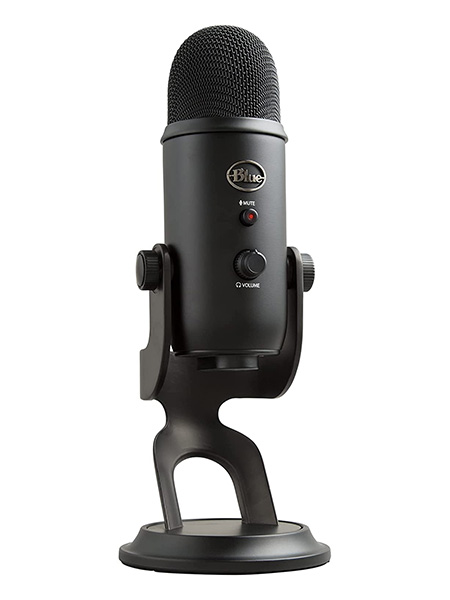
The Blue Yeti microphone has become a must-have for most podcasters. It’s an affordable cardioid USB microphone that provides professional quality in any context. It features a USB connection that plugs directly into your laptop. This will save you money as you won’t need an audio interface This is a typical foolproof microphone. Ideal for amateurs who want to deliver outstanding quality without spending hours creating the best recording setup.
One of the best features that the Blue Yeti microphone offers is the possibility to change between four different polar patterns: cardioid, omni-directional, bi-directional, and stereo. This aspect provides podcasters with limitless options when exploring the best sound for their podcast. It really feels like you can make the most of this affordable yet versatile microphone from day one.
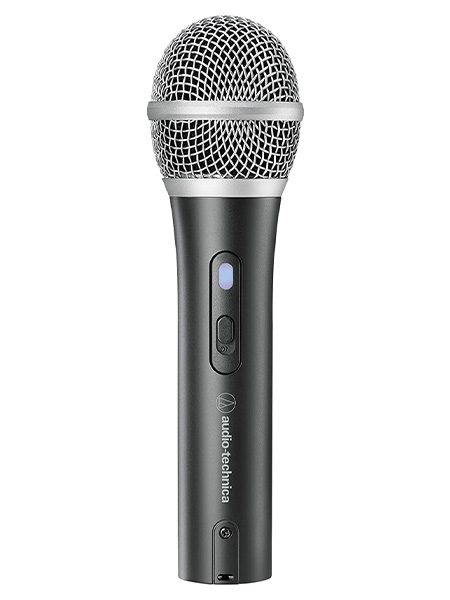
The reason why the ATR2100x outshines most of its competitors is because of its incredible versatility. You can see this microphone in conferences and live performances, and it’s a great option for podcasters of all levels.
Audio-Technica is a brand renowned worldwide that can offer incredible quality at a bargain price. Furthermore, this microphone offers both USB and XLR outputs, giving you more options when recording your show.
The ATR2100x is a dynamic microphone, which you may think makes it unsuitable for podcasters. It does take a little bit more time to achieve optimal sound quality. Yet the result is nonetheless fantastic for the price. The ATR2100x-USB features a standard cardioid polar pattern. As long as you speak in front of it, you’ll get high-quality recordings for your show.
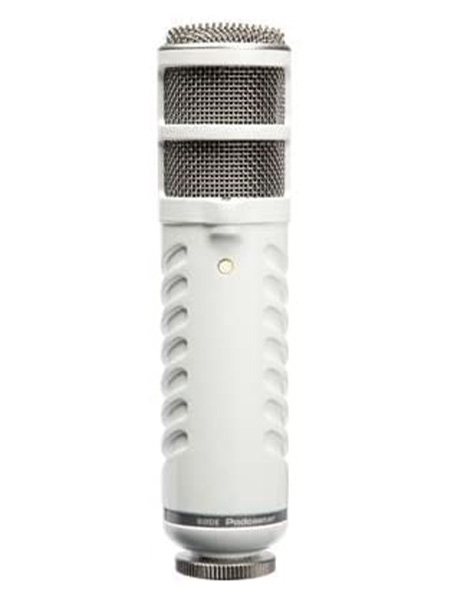
Here’s a microphone dedicated exclusively to podcasts and speech applications. Contrary to many other mics, the Podcaster is a dynamic microphone. Yet the microphone still picks up the most nuance and delivers pristine recordings.
The Podcaster has an internal shock mount, which prevents vibrations from affecting the recording but also makes it much heavier. It also features a built-in pop-filter that neutralizes plosive sounds. The price tag is relatively high, but if you’re serious about creating unique audio content, the Røde Podcaster is a fantastic option.
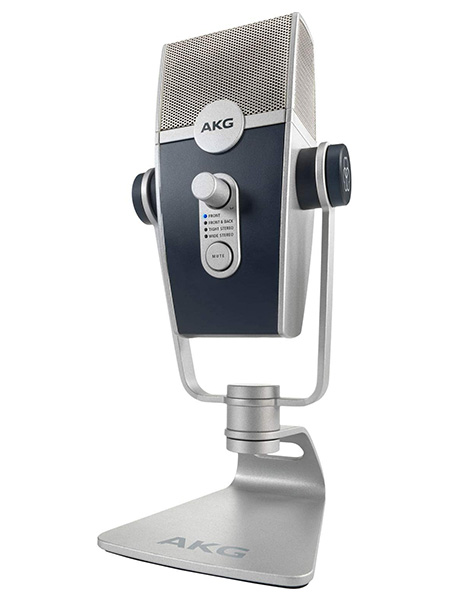
Apart from providing professional results, the AKG Lyra is also beautiful to look at. This USB condenser microphone offers incredible recordings when used for podcasts and general speech applications. It will satisfy your needs whether you’re already a professional or a newbie. The USB connection makes it easy to use in all situations. Overall the retro style offers a visual effect reminiscent of the good old radio stations.
The Lyra records 24-bit/192 kHz audio and offers multiple pickup patterns to make the most of it as you learn more about this classy microphone.
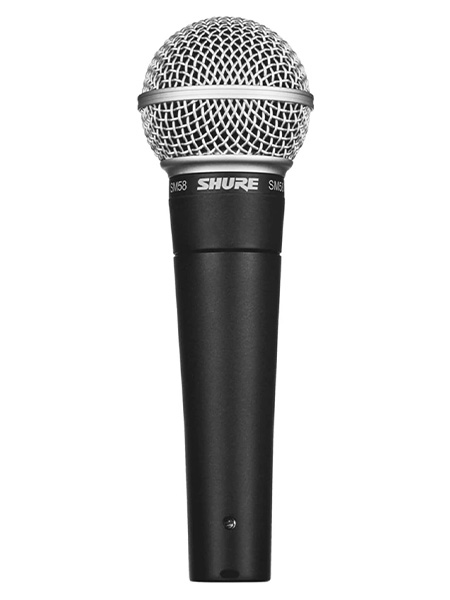
This is the most versatile microphone you’ll come across, used by speakers and singers alike for live events and recordings. This is a professional microphone that’s been in the market for decades. You’ll need to connect it to your laptop via an external audio interface as it doesn’t have a USB port. However, this inexpensive microphone is the weapon of choice of podcasters and speakers worldwide.
If your podcast will include music performances or special guests singing live, then the Shure SM58 is the microphone you need for your show. Artists used this microphone on stage for decades. To this day, the Shure SM58 is an unmissable piece of equipment for performers and professional music producers.

The PX-1 is a cardioid condenser microphone suitable for most home recording situations, from podcasting to recording an acoustic album. PreSonus is a brand known for the incredible quality of its products, and this microphone is no exception. The excellent sound clarity will satisfy podcasters of all levels. This is an XLR microphone, so you’ll need an external audio interface and xlr cable to use it.
The large-diaphragm condenser in the PreSonus PX-1 adds depth and richness to the sound while removing unwanted background noise coming naturally from your gear. At the cost of a little over $100, you can achieve professional audio results thanks to this little gem.
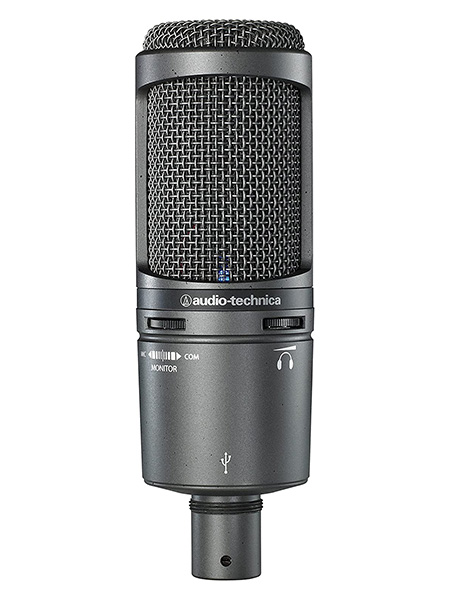
The AT2020USB+ is a cardioid condenser microphone with just a single polar pattern available, which is probably the only downside of this incredible and versatile USB microphone. The recording quality of this podcast microphone is the epitome of Audio-Technica’s attention to detail and will provide podcasters with pristine and transparent audio recordings.
The USB condenser microphone comes with a headphone preamp, offering a latency-free monitoring experience that often comes in handy when recording your shows. Furthermore, the volume control on the side offers the possibility to adjust the settings of your mic if your recording environment changes.
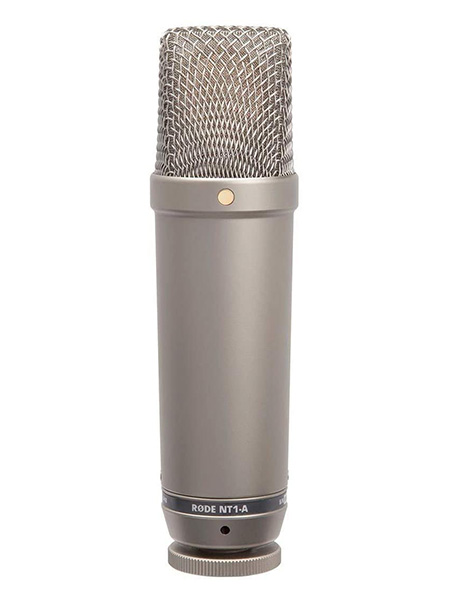
This is a microphone that’s been around for almost twenty years, but it’s more than just an old condenser microphone. The Røde NT1-A has been used by YouTubers and podcasters alike because it’s perfect for recording vocals. Excellent flat response and high sensitivity are other reasons why you should opt for this timeless, best-selling microphone.
This large-diaphragm condenser mic neutralizes most background noise, making it the ideal mic if you’re not recording in a professional studio. For $200, this classic workhorse will give you everything you need to start your podcast in no time.
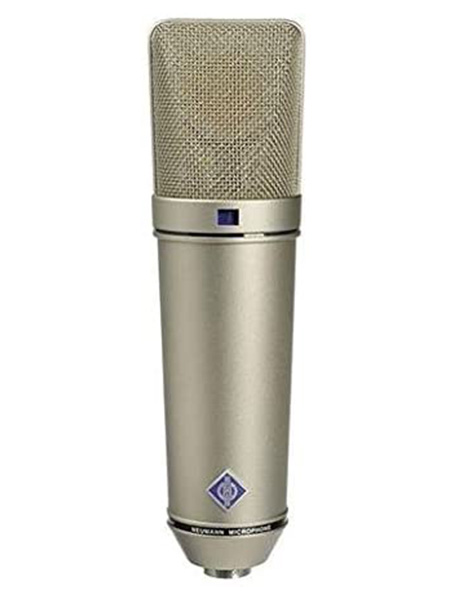
The Neumann U87 Ai is an expensive piece of equipment for a reason. The first version of this classic microphone was released in 1967. Over the years, it’s become a must-have for audio professionals, radio presenters, podcasters, and musicians.
This is a microphone with a distinctive character, and the recordings feel warm and deep regardless of the environment. The incredible versatility of this microphone is also possible thanks to the three polar patterns, omni, cardioid, and figure-8. This allows you to explore different recording settings without changing gear.

Not as expensive as the Neumann U87 Ai but still a high-end product, the SM7B features the top-grade construction and performance typical of Shure’s microphones. For podcasters, this microphone is a fantastic option because of the off-axis rejection, which reduces unwanted background noise, and the crisp audio quality it delivers in most environments.
In my opinion, the SM7B is the best podcast microphone for anyone who wants to start or upgrade their podcast. The excellent off-axis noise rejection, combined with a unique, natural depth added to the speaker’s voice, makes it a versatile microphone that can make your voice stand out in every situation.
I hope this article gave you a deeper understanding of what you need to know when choosing the best podcast microphones. I’m going to end this piece with some final thoughts based on personal experience.
Often, choosing the optimal environment is more important than the quality of the microphone you use. This is because no podcasting microphone can compensate for excessive background noise or reverberation. Choosing a room that provides you with the tranquillity and audio quality you need should be your first step when starting a new podcast. After that, you can choose a podcasting microphone that will further magnify the quality of the sound recorded in the room.
One aspect I didn’t mention before, but it’s nonetheless essential, is the tone of your voice. If your voice is naturally high or low, you’ll need to look for microphones that enhance, in particular, the frequencies your voice is in.
Generally, most speakers aim for a warm and rich sound that can be achieved more easily by those with a deeper voice. So, make sure you study your voice timbre carefully. Then choose a microphone for podcasting that’s in line with your natural voice.
Learn more about How to Make Your Voice Deeper in our new article.
Although the budget is an important aspect to consider when buying a new podcasting microphone, today there are so many affordable options that price is no longer a crucial factor. You can spend anything between $100 and $300 and get fantastic results as long as you choose the right podcasting mic for your needs.
Choosing a more expensive microphone becomes a valid option when you’re already into podcasting and know precisely the kind of sound you’re looking for. Therefore, if you’ve just started, I suggest you choose an entry-level USB microphone. Then upgrade later on (and only if you need to.)
Don’t be scared by audio interfaces. They’re extremely easy to use and can change your sound dramatically, thanks to the additional features they offer to adjust your sound. If you think they’ll take too much space when moving around with your audio equipment, let me reassure you that that’s not the case.
Most interfaces are powered directly by your laptop (so you won’t need a charger). They have a simple, plug-and-play USB output. Your recording software will immediately recognize it, so it’ll be a matter of minutes before you can start recording.
My last recommendation is never to stop experimenting with your sound and exploring new ways of recording your podcast. As you become more confident and get to know more features about your podcasting microphones, you’ll feel the need to upgrade your show and improve the quality of your recordings.
These days, microphones may look like they’re just “plug & play.” However, most of them offer various features to enhance the audio quality, so make sure you make the most of them before buying a new podcast mic unnecessarily.
If you think there are some great podcasting microphones I forgot to mention, please let me know. And good luck